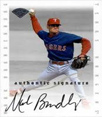Mark Brandenburg: Former RHP Texas Rangers and Boston Red Sox
1. Could you tell us your story on dropping down?
I started dropping down at the encouragement for my high school coach, David Sitton. David had dropped down as a pitcher at San Jacinto Junior College and the University of Arkansas and was comfortable in teaching the mechanics. I possessed very average velocity and movement as a typical “over the top” pitcher. Originally, as an “over the top pitcher” my off speed pitches were OK, but nothing out of the ordinary. I realized I needed to differentiate myself if I wanted to advance. I was not particularly a strong hitter, but an average hitter with a decent glove, making Second Team All District as third basemen (not a high accomplishment)! However, my strength was my ability to be very coachable as a pitcher and throw many different pitches for strikes. I could learn new angles and pitches generally pretty easily. My Junior College pitching coach, Don Clinton, taught me a slider (slurve really) from another arm angle and it ended up being my best pitch that I threw in all counts. Again, like David Sitton, Don was a submariner at Louisiana Tech in college, and was comfortable in teaching/coaching me.
2. What are some of the advantages you had from your arm angle?
I felt like the biggest advantage was being different. Additionally, if you had the natural sink or run/tail produced by the different arm angle, it often allowed more margin of error when throwing to locations (similar to velocity). Likewise, the different spin produced from different arm angles, seemed to make it more challenging for hitters to develop a more consistent rhythm and timing.
3. If you didn't drop down, do you think you would have had the same success?
I am pretty confident I would have not been as successful.
4. What would you tell someone debating on changing their arm angle?
I believe if you can throw strikes from a different arm angle, it should be considered. However, I am a believer in having a complimentary off speed pitch from the same arm angle if you are going to deviate. Unless someone has extraordinary velocity on their fastball, it is important to expand the strike zone front to back with the change of speeds. Thus, if you don’t have two pitches from the same arm angle, a hitter can figure what the speed is simply by the arm angle (much like trying to pick up the spin).
5. Are there any mechanical tips that you'd give to someone throwing sidearm/submarine?
This is a difficult question to answer via email. There are so many factors when evaluating a submarine pitcher’s delivery. For example, some will stay tucked and others, like myself, will pull off of the ball purposefully to ensure more sink.
6. What pitches did you throw?
I threw a fastball, sinker, slider, and changeup from two different arm angles and all pitches were different speeds. As an example, one of my sliders was more of a side armed curve that was named “the Frisbee”, because of its slow velocity and floating flight. Each pitch had a purpose, much like a golf club in a golfer’s bag. There were some pitches I like throwing more to righties than lefties and vice versa. Likewise, there were some pitches I liked throwing ahead in the count or behind in the count. However, it was important to be able to throw any of the pitches at any time for a strike if necessary, otherwise the pitch was useless. For example, I could throw a split finger/forkball and a knuckleball, but did not have the confidence in throwing it in a tight situation, so I did not keep them as a pitches.
7. How did you pitch to lefties/righties?
There was not a typical way to pitch any hitter with the quality of my stuff, but I did throw a lot of off speed pitches and try to pitch backwards in the count versus the typical submarine way (sinkers in to righties and sinkers away to lefties). I always felt that I needed to be careful with pitch selection in an effort to change speeds a lot; this was necessary because my velocity and the crispness of my off speed was lacking.
8. Lastly what was your favorite part about pitching from down there?
pitching in general!





